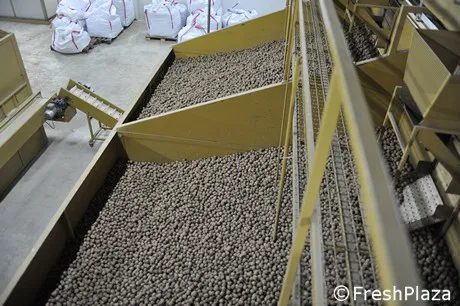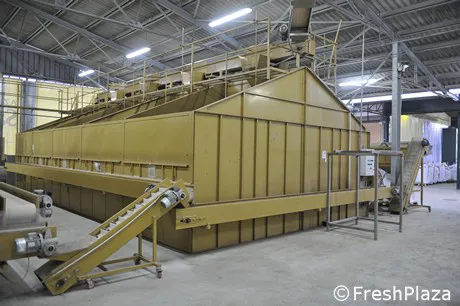Once harvested, they must be husked. This operation is carried out by a dedicated machine similar to a big centrifuge. Then walnuts must be dried with warm air for 24/36 hours, graded and bagged. Bags are taken to New Factor for commercialisation.
"A first sorting is carried out before drying. New Factor focuses on high-quality. Harvesting is almost over and walnuts have a darker colour, but organoleptic qualities are the same. 2016 will not be remembered for its big quantities but, at least in our area, quality is high."

It takes around 24 to 36 hours to dry nuts
Good water sources are needed to grow walnuts, as they need to be irrigated as much as kiwis. At the same time, water must not stagnate, so soil must be permeable and continuously supervised.

The drying system
Yields hover between 4 and 5 tons/ha of dried produce. Italian walnuts are rather popular, especially if quality is good. Italy though imports most of what it consumes, just think that there are currently queues in our retail space in Forlì to buy freshly dried walnuts.
